 October 29, 2020 John E. Ross, KD8IDJ, Editor
| ||||||
ARRL Urges Members to Join in Strongly Opposing FCC's Application Fees Proposal ARRL will file comments in firm opposition to an FCC proposal to impose a $50 fee on amateur radio license and application fees. With the November 16 comment deadline fast approaching, ARRL urges members to add their voices to ARRL's by filing opposition comments of their own. The FCC Notice of Proposed Rulemaking (NPRM) MD "We encourage all members to use the ARRL Guide to file comments opposing the imposition of the proposed $50 application fee," ARRL President Rick Roderick, K5UR, said. "Let's highlight amateur radio's long history of public service." From Our Members... Please accept my thanks for the October 27, 2020, special edition of The ARRL Letter, "ARRL Urges Members to Join in Strongly Opposing FCC's Application Fees Proposal." I appreciate ARRL notifying members of the proposal and especially the guidance on submitting a comment. -- Charles F. Gottlieb, KM4NTD, Miami, Florida Under the proposal, amateur radio licensees would pay a $50 fee for each amateur radio application for new licenses, license renewals, upgrades to existing licenses, and vanity call sign requests. The FCC has also proposed a $50 fee to obtain a printed copy of a license. Excluded are applications for administrative updates, such as changes of address, and annual regulatory fees. Amateur Service licensees The FCC proposal is contained in a Notice of Proposed Rulemaking (NPRM) in MD Docket 20-270, which was adopted to implement portions of the "Repack Airwaves Yielding Better Access for Users of Modern Services Act" of 2018 -- the so-called "Ray Baum's Act." The Act requires that the FCC switch from a congressionally-mandated fee structure to a cost-based system of assessment. The FCC NPRM proposes application fees for a broad range of services that use the FCC's Universal Licensing System (ULS), including the Amateur Radio Service. The 2018 statute excludes the Amateur Service from annual regulatory fees, but not from application fees. The proposal affects all FCC services and does not single out amateur radio. As the FCC explained in its NPRM, Congress, through the Ray Baum's Act, is compelling regulatory agencies such as the FCC to recover from applicants the costs involved in filing and handling applications. Read more and visit ARRL's summary page for the proceeding. It's a Wrap for Hurricane Watch Net, ARES Teams Stand Down After an activation that lasted more than 9 hours, the Hurricane Watch Net (HWN ) suspended operations on October 29 at around 0130 UTC. "Although Zeta was still a hurricane just east of Hattiesburg, Mississippi, moving to the northeast at about 30 MPH, we hated to close operations, but propagation on 20 and 40 meters was totally gone," HWN Manager Bobby Graves, KB5HAV, said. "The turnout of reporting stations was great, but we can always use more. Meteorologists love weather data. So, we do our best to collect and forward as much as we can."
ARES teams in Louisiana went on standby status on October 27, ready to activate at the request of local emergency management officials or served agencies. At midday on Wednesday, the Louisiana Emergency Net was placed on active standby status on 3.878 and 7.255 MHz, concluding operations at 2100 UTC on Wednesday. The Northern Florida ARES Net convened October 28 on 3.950 MHz for about 12 hours in anticipation of tropical storm winds and a risk of tornado activity. "Our HF net shut down this morning," Northern Florida Section Emergency Coordinator Karl Martin, K4HBN, said. "The counties closed shelters and had their ARES groups stand down soon after." Martin said operators did cover three shelters. "We had challenges due to HF conditions, and one of the ARES groups lost a repeater and had to go to a back-up plan."
"As the sun comes up, damage assessments are still ongoing," the George County Sheriff's office announced on the George County ARES Facebook page. "Currently a majority of the county is without power." The sheriff reported many downed trees and power lines and advised against nonessential travel. WX4NHC at the National Hurricane Center (NHC) in Miami activated at 1600 UTC on October 28, monitoring HWN's frequencies of 14.325 and 7.268 MHz as well as the VoIP Hurricane Net (VoIP WX) and other resources. The net funnels "ground truth" reports to NHC forecasters. Ham Aid emergency communication kits from ARRL had been pre-positioned in Louisiana in preparation for this event. Read more. ARRL Podcasts Schedule
The latest edition of Eclectic Tech (Episode 19) The On the Air and Eclectic Tech podcasts are sponsored by Icom. Both podcasts are available on iTunes (iOS) and Stitcher (Android), as well as on Blubrry -- On the Air | Eclectic Tech. Guidelines Issued for ARRL DX Contest Multioperator Stations ARRL has issued guidelines for multioperator stations competing in the ARRL DX Contest (CW and phone). With the global pandemic continuing to impose restrictions on social gatherings, multioperator contest stations may not be able to operate normally while still adhering to local social distancing guidelines. ARRL has decided to make temporary accommodations for a multioperator station to participate in these popular ARRL contests, under these guidelines:
The multioperator contest station may be staffed at less than full capacity while maintaining safe practices, so operating with a combination of team members at home stations and team members at the contest station is permissible. The CW contest takes place on the third full weekend in February (February 20 - 21, 2021). The phone contest takes place on the first full weekend in March (March 6 - 7, 2021). For questions, contact the ARRL Contest Branch. The K7RA Solar Update Tad Cook, K7RA, Seattle, reports: Our sun is finally waking up. The average daily sunspot number rose from 15 to 17, which is nothing remarkable, but the reporting week ended on Wednesday with a daily sunspot number of 36. Average daily solar flux rose from 74.5 to 76.9.
Predicted planetary A index is 8 on October 29; 5 on October 30 - 31; 12 and 8 on November 1 - 2; 5 on November 3 - 6; 10 on November 7; 5 on November 8 - 16; 10, 8, and 12 on November 17 - 19; 18, 15, and 20 on November 20 - 22; 15, 10 and 8 on November 23 - 25; 5 on November 26 - 27; 8 on November 28; and 5 on November 29 - December 12. Sunspot numbers for October 22 - 28 were 11, 11, 11, 11, 17, 22, and 36, with a mean of 17. The 10.7-centimeter flux was 74.9, 72, 72.1, 74.2, 75, 82.4, and 87.6, with a mean of 76.9. Estimated planetary A indices were 6, 12, 17, 15, 15, 9, and 12, with a mean of 12.3. Middle latitude A index was 3, 10, 16, 9, 15, 7, and 9, with a mean of 9.9. A comprehensive K7RA Solar Update is posted Fridays on the ARRL website. For more information concerning radio propagation, visit the ARRL Technical Information Service, read "What the Numbers Mean...," and check out K9LA's Propagation Page. A propagation bulletin archive is available. For customizable propagation charts, visit the VOACAP Online for Ham Radio website. Share your reports and observations. Just Ahead in Radiosport
New Zealand Radio Amateurs Lose Access to 60 Meters Radio amateurs in New Zealand no longer have access to 60 meters, effective on October 24. Use of the band by radio amateurs in New Zealand was provisional, allowing hams there to use two frequencies in the band -- 5353.0 kHz and 5362.0 kHz -- as part of a "trial." New Zealand Association of Radio Transmitters (NZART), the national As in the US, the federal government and military are primary on the 5 MHz band. According to NZART, the decision was not made lightly by NZDF, but said access to that part of the HF spectrum is necessary to support NZDF's new platforms, tactical radio equipment, and updated HF site equipment in the delivery chain. "Additionally, access to HF is a key part of their communications plans both in New Zealand and to support our forces overseas," NZART explained. "While this is a disappointing outcome, NZART would like to thank NZDF for allowing us to take part in the trial, and we look forward to working with them in the future on matters of common interest." -- Thanks to Paul Gaskell, G4MWO/The 5 MHz Newsletter ARRL Learning Network Webinars Visit the ARRL Learning Network website (a members-only benefit) to register for upcoming sessions and to view previously recorded session. The schedule is subject to change. How to Get Started in Amateur Radio Contesting: Anthony Luscre, K8ZT
Tuesday, November 3, 2020, 10 AM PST / 1 PM EST (1800 UTC) Amateur Radio's Role at the Boston Marathon Bombing: Steve Schwarm, W3EVE Amateur radio has played a significant role in public service communications for the Boston Marathon for several decades. That role was put to the test in 2013, when two bombs were exploded near the finish line. This presentation will describe the role that ham radio played at the marathon and how that role changed due to the bombing. Tuesday, December 8, 2020, 10 AM PST / 1 PM EST (1800 UTC) Learn and Have Fun with Morse Code: Howard Bernstein, WB2UZE, and Jim Crites, W6JIM Morse code, or "CW," is a popular ham radio operating mode. Learning CW does not have to be an arduous or lonely experience. Learn, practice, and enjoy CW with the methods used by the Long Island CW Club. Thursday, December 17, 2020, 5 PM PST / 8 PM EST (0100 UTC on Friday, December 18) Fldigi Could be a Tool in the November Frequency Measuring Test A new frequency-measuring test mode added to the digital communication program Fldigi -- developed by Dave Freese, W1HKJ -- makes the program useful for the Frequency Measuring Test (FMT) on November 13. The new test mode replaces frequency analysis mode, making Fldigi useful for FMT participants. Fldigi can still Very little equipment is necessary to participate in the FMT. A software-defined radio (SDR) accessed by the internet will work; check out the GPS-stabilized SDRs Kiwi SDRs. A hardware cable or a virtual cable can connect SDR audio to the Fldigi input. Calibration will be required. While older rigs can be used, Fldigi works best with a rig that can be controlled by a serial or USB connection from the PC to set the VFO with 1 Hz resolution. Some rigs display frequency to 1 Hz. Others only display to 10 Hz but can be set by the PC to 1 Hz. Most rigs dating from about 1995 and later will work well. Fldigi needs to know the frequency that the radio thinks it is tuned to or the frequency that you think it is tuned to. The new FMT modem works best with a reference signal injected along with the FMT transmitted signal -- the FMT's unknown signal. The reference signal must have some accurately known frequency that can be set near the unknown frequency (within 1 kHz or so). The reference can be a signal generator stabilized by a GPS Disciplined Oscillator (GPSDO) that can easily be set to output a useful frequency. Using Fldigi's new FMT modem without a reference can still provide good results, but requires careful calibration. ARRL sponsored earlier FMTs. The first ARRL FMT took place in 1931. Back then, it was required that Official Observers participate and meet certain standards. Announcements
Radio Amateurs in Western Pennsylvania to Commemorate KDKA Broadcasting Centennial Pittsburgh radio station KDKA will celebrate 100 years of radio broadcasting in November, and Pennsylvania radio amateurs will honor that milestone in a multi-station special event. KDKA dates its broadcasting history to the airing of the Harding-Cox presidential "More than 100 years ago, many experimenters started delving into a new technology known as wireless, or radio," said Bob Bastone, WC3O, Radio Officer for the Skyview Radio Society in New Kensington, Pennsylvania. Bastone explained that many of those early pioneers were radio amateurs. "One hundred plus years later, many amateur radio operators are still contributing to wireless technology, while also serving their communities and enhancing international goodwill. Congratulations to KDKA Radio, also known in the early years as amateur radio stations 8XK, 8ZZ, and W8XK."
Ham radio clubs participating in the centennial special event include the North Hills Amateur Radio Club in Pittsburgh -- which is planning to operate from KDKA's 1930s transmitter site, where an original tower pier still stands. A 1920s transmitter site, in Forest Hills, will serve as another operating location. Other clubs will take part. Individual radio amateurs will operate from their own stations, and a small group of hams is planning a portable operation from South Park in suburban Pittsburgh. "We amateur radio operators look forward to contacting thousands of other hams around the world to celebrate this huge milestone in the commercial broadcasting industry," said Bastone. Contact him for more information. Read more. -- Thanks to ARRL Public Information Officer and Allegheny County ARES Emergency Coordinator Bob Mente, NU3Q, for providing the information for this story. Oldest Known US Radio Amateur, Cliff Kayhart, W4KKP, SK Charles Clifford "Cliff" Kayhart, W4KKP, of White Rock, South Carolina, died on October 26, a few days past his birthday. An ARRL member, he was 109 and the oldest known US radio amateur and possibly the oldest ham in the world.
First licensed in 1937 as W2LFE in New Jersey, he also held W9GNQ. According to his obituary, Kayhart built his first radio at the age of nine. After working for New York Telephone Company as a young man, he became enamored with engineering, so he headed off to Tri-State University in Indiana, graduating with a degree in aeronautical engineering. Afterward, he went to work for RCA in New Jersey, becoming a quality control manager. Positions followed at Philco Radio and Bendix Aviation. During World War II, Kayhart joined the US Army Signal Corps, which sent him off to school to study radar. He was assigned to the US Army Air Corps in Georgia and then sent to Hawaii to become part of a Signal Service Battalion. He served at Iwo Jima, shortly after the US victory there, setting up equipment for long-range radio communication and broadcasting, with rhombic antennas in four directions.
In 1946, Kayhart left the Army with the rank of captain, joining Magnavox the following year as its first field engineer; at the time, Magnavox was about to launch a line of television sets. Eventually, he was transferred to the Customer Acceptance Department in Tennessee. Kayhart traveled to Japan in 1963 in search of Japanese television sets. He retired from Magnavox in 1976. In the 1970s, while living in Tennessee, he spearheaded a project that installed a 2-meter FM repeater on the summit of Camp Creek Bald, still in operation on the Tennessee/North Carolina border. After Kayhart moved into an assisted living facility in 2017, he had an HF station in his room, courtesy of the Dutch Fork Amateur Radio Group, to which he belonged, and the Columbia Amateur Radio Club. Kayhart remained active on the air until shortly before he died. Read more. In Brief...
Upcoming ARRL Section, State, and Division Conventions Note: Many conventions and hamfests have been canceled or postponed due to the coronavirus pandemic. Check the calendar of canceled events on the ARRL website.
Find conventions and hamfests in your area. ARRL -- Your One-Stop Resource for . .
Subscribe to...
Free of charge to ARRL members...
| ||||||
.jpg) Docket 20-270 appeared in the October 15 edition of The Federal Register and sets deadlines of November 16 to comment and November 30 to post reply comments, which are comments on comments already filed. ARRL has prepared a
Docket 20-270 appeared in the October 15 edition of The Federal Register and sets deadlines of November 16 to comment and November 30 to post reply comments, which are comments on comments already filed. ARRL has prepared a .png) have been exempt from application fees for several years.
have been exempt from application fees for several years.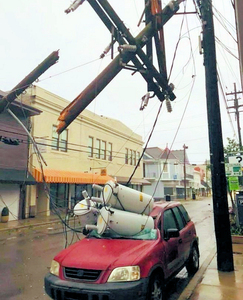
.jpg) In George County, Mississippi, ARES Emergency Coordinator General Dailey, KD4VVZ, suspended routine net traffic to take storm-related reports such as weather data, property damage, and power status. Daily said repeater net would remain active for 12 hours, and the information would be relayed to weather forecasters. The net prepared to carry occasional digital traffic.
In George County, Mississippi, ARES Emergency Coordinator General Dailey, KD4VVZ, suspended routine net traffic to take storm-related reports such as weather data, property damage, and power status. Daily said repeater net would remain active for 12 hours, and the information would be relayed to weather forecasters. The net prepared to carry occasional digital traffic.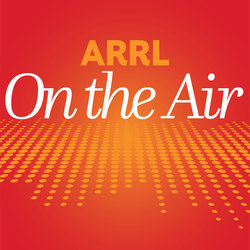 The latest episode of the On the Air podcast (Episode 10) includes an interview with ARRL Lifelong Learning Manager Kris Bickell, K1BIC, about ARRL's new "Learning Network" webinars.
The latest episode of the On the Air podcast (Episode 10) includes an interview with ARRL Lifelong Learning Manager Kris Bickell, K1BIC, about ARRL's new "Learning Network" webinars.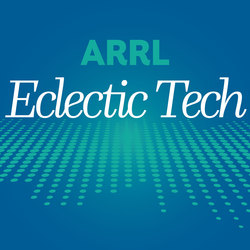 discusses radiosondes and how hams can receive their telemetry, in addition to a discussion about power supplies with Bob Allison, WB1GCM, of the ARRL Lab.
discusses radiosondes and how hams can receive their telemetry, in addition to a discussion about power supplies with Bob Allison, WB1GCM, of the ARRL Lab.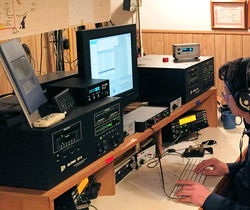 of US and Canadian stations, all team member stations must be in the same US state or Canadian province.
of US and Canadian stations, all team member stations must be in the same US state or Canadian province. Predicted solar flux is 88 on October 29 - 31, which is remarkable; 82, 78, 75, and 72 on November 1 - 4; 74 on November 5 - 7; 75 on November 8 - 12; 72 on November 13; 70 on November 14 - 21; 74 and 72 on November 22 - 23; 70 on November 24 - 26; 72 on November 27; 74 on November 28 - December 4; 75 on December 5 - 9; 72 on December 10, and 70 on December 11 - 12.
Predicted solar flux is 88 on October 29 - 31, which is remarkable; 82, 78, 75, and 72 on November 1 - 4; 74 on November 5 - 7; 75 on November 8 - 12; 72 on November 13; 70 on November 14 - 21; 74 and 72 on November 22 - 23; 70 on November 24 - 26; 72 on November 27; 74 on November 28 - December 4; 75 on December 5 - 9; 72 on December 10, and 70 on December 11 - 12.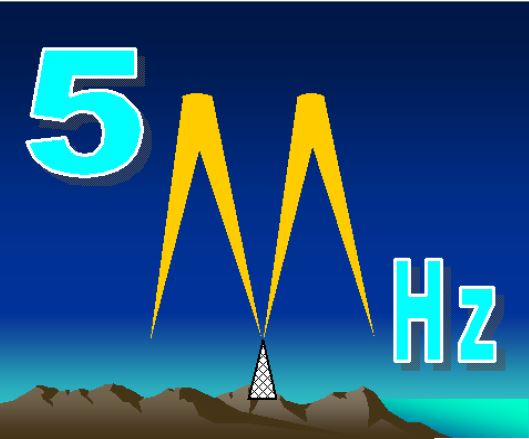 amateur radio organization, said the New Zealand Defence Force (NZDF) advised the organization that it was not willing to approve another renewal of the 5 MHz trial allocation. NZART has indicated that it will continue to work with telecoms regulator RSM to see if other ways may be available to provide access to 5 MHz.
amateur radio organization, said the New Zealand Defence Force (NZDF) advised the organization that it was not willing to approve another renewal of the 5 MHz trial allocation. NZART has indicated that it will continue to work with telecoms regulator RSM to see if other ways may be available to provide access to 5 MHz. Why do hams participate in on-air contests? How would I benefit from contesting? What do I need to get started in contesting? What are good contests for beginners? Where can I learn more? This session will answer all of these questions and more.
Why do hams participate in on-air contests? How would I benefit from contesting? What do I need to get started in contesting? What are good contests for beginners? Where can I learn more? This session will answer all of these questions and more.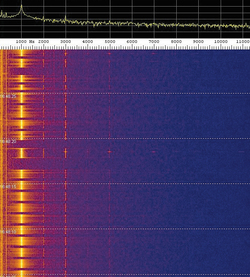 measure an unknown frequency to three decimal places (i.e., to 1 mHz), but it can also use a reference frequency to correct the unknown calculation for inaccuracies of the receiver. (An
measure an unknown frequency to three decimal places (i.e., to 1 mHz), but it can also use a reference frequency to correct the unknown calculation for inaccuracies of the receiver. (An 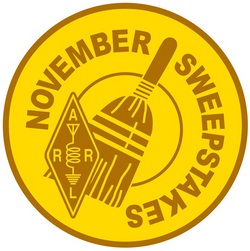 takes place November 7 - 9. The hallmark of this very popular operating event is its challenging and lengthy exchange, which has its origins in the National Traffic System (
takes place November 7 - 9. The hallmark of this very popular operating event is its challenging and lengthy exchange, which has its origins in the National Traffic System ((1).png) Schedule and frequency information
Schedule and frequency information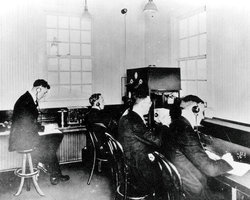 results on November 2, 1920, and the station has been on the air ever since. The special event, which will involve the operation of four stations, will run through the entire month of November.
results on November 2, 1920, and the station has been on the air ever since. The special event, which will involve the operation of four stations, will run through the entire month of November.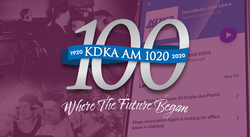 Special event stations K3K, K3D, K3A, and W8XK will set up and operate at several locations in Pennsylvania during November. Stations will determine their own modes and schedules. Visit the
Special event stations K3K, K3D, K3A, and W8XK will set up and operate at several locations in Pennsylvania during November. Stations will determine their own modes and schedules. Visit the .jpg)
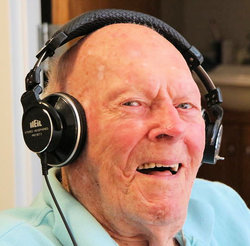 Last November, Roanoke Division Director Bud Hippisley, W2RU; Vice Director Bill Morine, N2COP, and South Carolina Section Manager Marc Tarplee, N4UFP, jointly presented Kayhart with ARRL's Centurion Award, which honors centenarian members who have at least 40 years of ARRL membership. On that occasion, Hippisley
Last November, Roanoke Division Director Bud Hippisley, W2RU; Vice Director Bill Morine, N2COP, and South Carolina Section Manager Marc Tarplee, N4UFP, jointly presented Kayhart with ARRL's Centurion Award, which honors centenarian members who have at least 40 years of ARRL membership. On that occasion, Hippisley 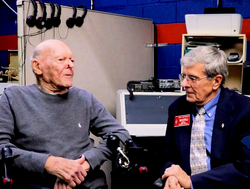
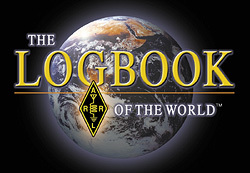 ARRL Logbook of The World has harmonized the designation of FST4 Protocol. The Logbook of The World (LoTW) Committee worked with WSJT-X developer Joe Taylor, K1JT, to harmonize the designation of FST4 among WSJT-X, the ADIF standard, and LoTW. At present, FST4 is only supported in a
ARRL Logbook of The World has harmonized the designation of FST4 Protocol. The Logbook of The World (LoTW) Committee worked with WSJT-X developer Joe Taylor, K1JT, to harmonize the designation of FST4 among WSJT-X, the ADIF standard, and LoTW. At present, FST4 is only supported in a 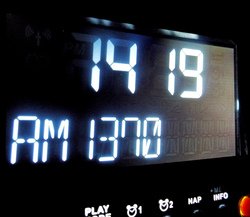 The FCC has adopted a Report and Order that allows AM radio stations to operate using all-digital broadcast signals. "AM broadcasters will be able to voluntarily choose whether and when to convert to all-digital operation from their current analog or hybrid analog/digital signals," the FCC said. "All-digital broadcasting offers AM listeners significantly improved audio quality and more reliable coverage over a wider listenable area than analog or hybrid digital broadcasts. It also allows broadcasters to provide additional services to the public, such as song title and artist information."
The FCC has adopted a Report and Order that allows AM radio stations to operate using all-digital broadcast signals. "AM broadcasters will be able to voluntarily choose whether and when to convert to all-digital operation from their current analog or hybrid analog/digital signals," the FCC said. "All-digital broadcasting offers AM listeners significantly improved audio quality and more reliable coverage over a wider listenable area than analog or hybrid digital broadcasts. It also allows broadcasters to provide additional services to the public, such as song title and artist information."







